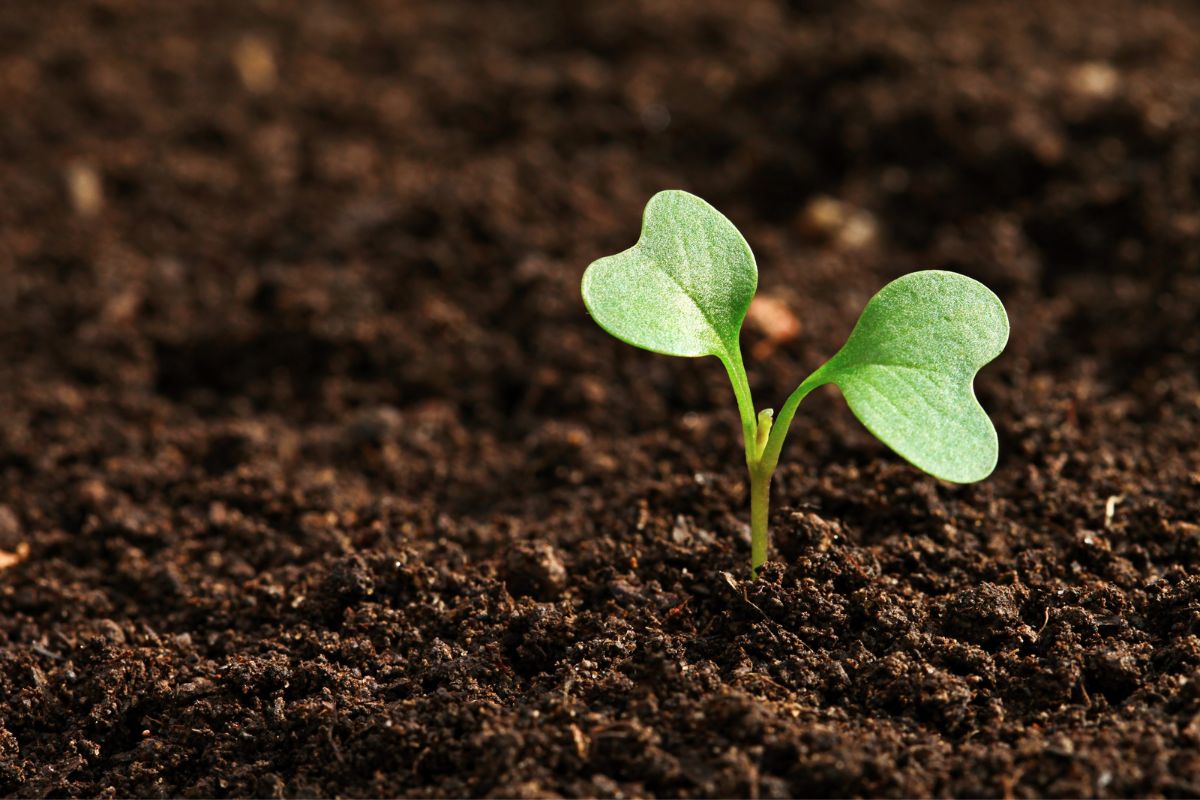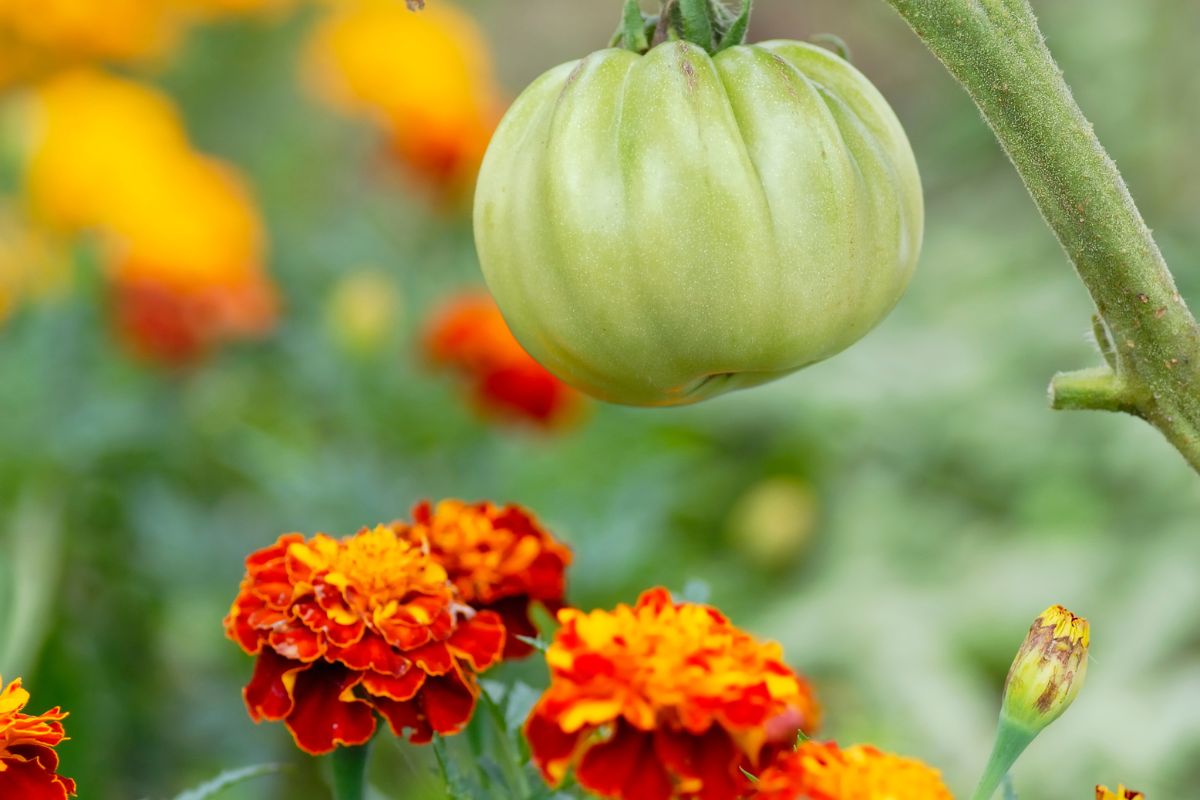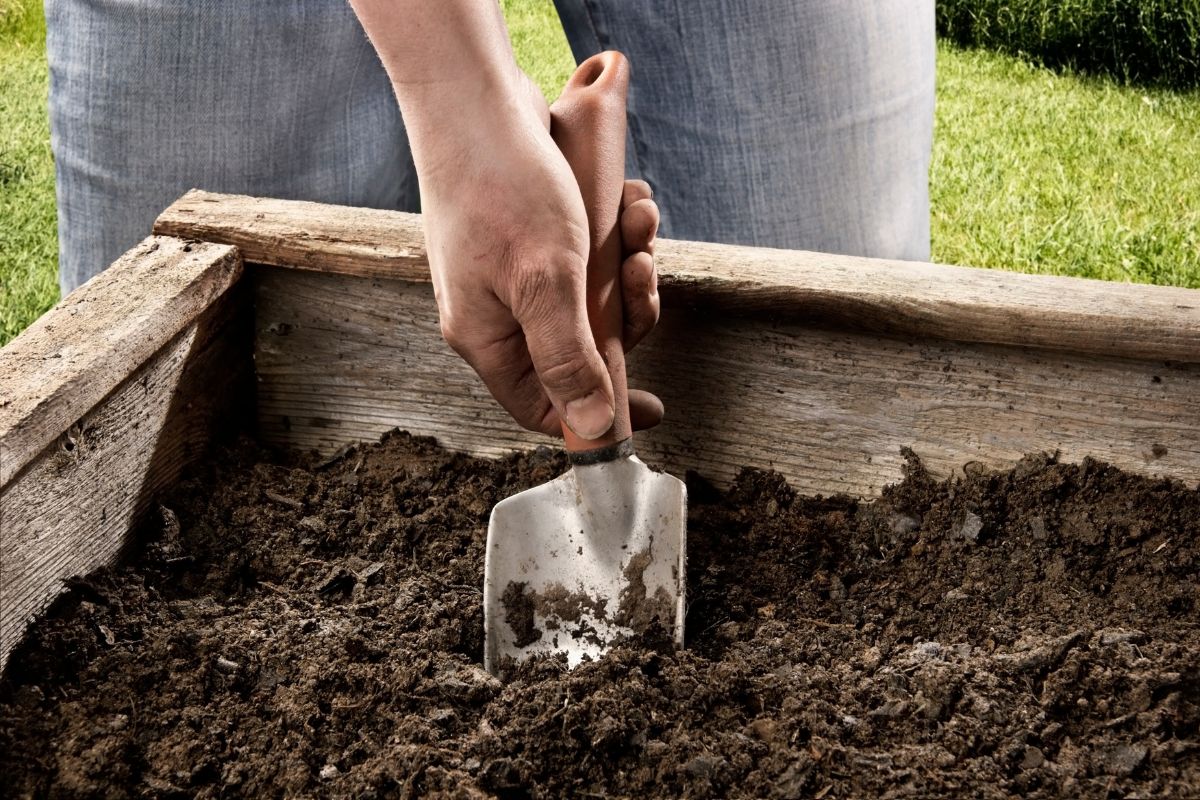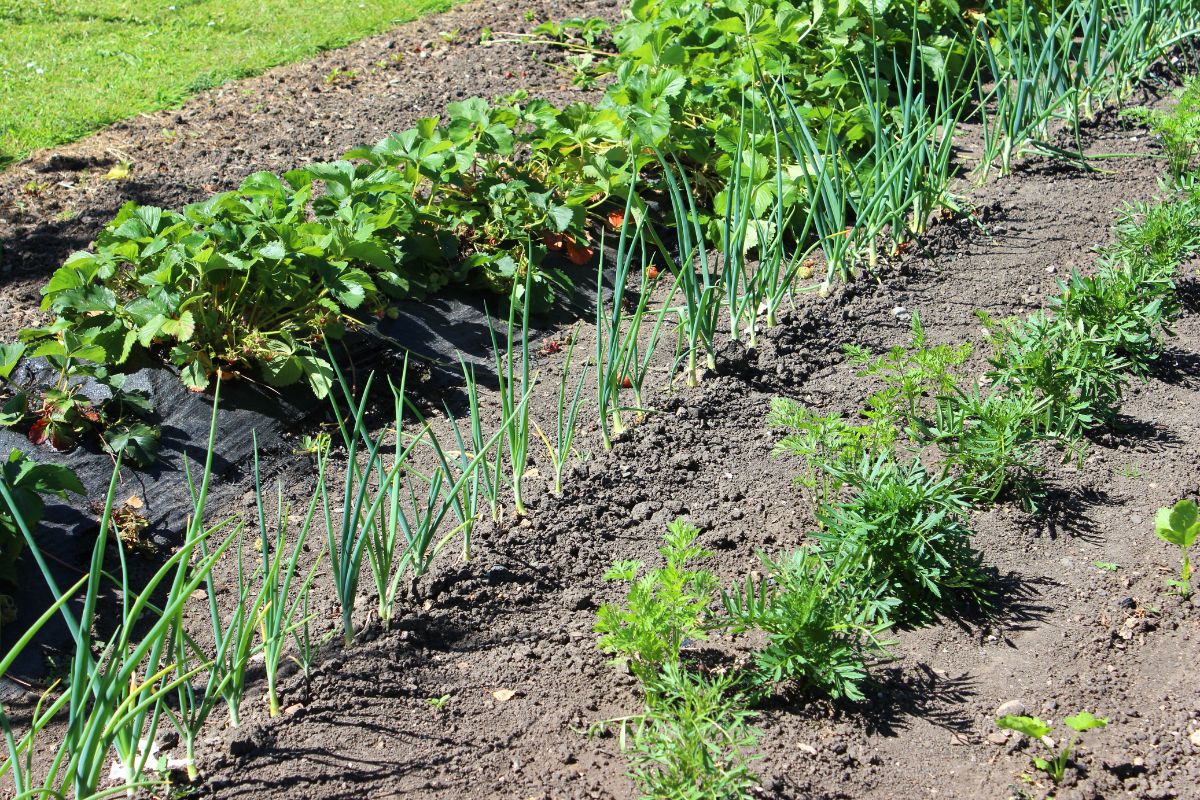Companion planting is an important component of raised bed gardening. The practice of growing complementary plants in close proximity increases crop productivity and helps to:
- Manage pests
- Improve soil health
- Act as a natural mulch
- Increase biodiversity
Intercropping dates back centuries, when indigenous communities developed and practiced this approach. Today, growers use the same principles for agricultural farming as well as home gardening. Companion planting in raised garden beds helps maximize the results of their efforts.
This article delves into why companion planting is an ideal gardening method for raised beds, how to determine which plants make good companions, and how to maintain good soil health.
Support Soil Health and Prevent Pests with Companion Planting

Companion planting enables gardeners to improve soil fertility and simultaneously manage pest infestations, which are a costly adversary: not only can they wipe out entire crops, but pests cause an estimated $20 – $40 billion in global crop damage annually.
Infestations are more likely to occur in weakened and failing greenery, which is why nutrient-rich soil is so important. After all, soil provides 13 essential elements that plants need to survive, including macronutrients – which build plant proteins that help with root and seed production, support DNA replication, and move nutrients throughout the plant – and micronutrients that play an important role in plant growth and development.
To prevent weakened plants and unwanted pests in your raised garden bed, we recommend using GardenBlenz Soil or GardenBlenz Soil – Organic. Rich in micro- and macronutrients, its pest-free, organic makeup provides the best foundation for supporting root growth and promoting healthy plants.
Beyond pest management, interplanting helps generate healthy soil thanks to the varied types of root systems. By pairing shallow-rooted plants next to deep-rooted plants, the soil experiences increased aeration that helps combat compaction and enables air and moisture to move through the earth to sustain plants. The deeper-rooted plants pull nutrients and water up from the soil depths, maintaining soil health and moisture, and improving drought resistance.
Best Plants to Pair for Companion Planting

The practice of intercropping is both an art and a science. Choose plants that can positively benefit each other based on factors like:
- Growth speed: Try planting fast-growing plants like lettuce and spinach next to slower growers (think tomatoes, cucumbers, and peppers). You’ll be harvesting the first crop just as the canopy of the later crop is filling in.
- Light conditions: By interplanting tall-growing, sun-loving plants with lower-growing, shade-tolerant species, growers enjoy larger, and more diverse, harvests.
- Water requirements: Find plants with similar light and water needs. Tomato and basil not only thrive under the same sunlight and moisture conditions, but basil can promote tomato growth while repelling pests like mosquitoes, aphids, and whiteflies.
Ideal Plant Combinations
The possibilities for intercropping are unlimited, but here are a few pairings that have proven successful.
- The three sisters: This well-known combination includes corn, beans and squash. Beans are legumes that continually supply nitrogen to the soil. Corn stalks provide a support for the beans to climb. And with its broad leaves, squash provides a living mulch that shades the soil, reduces evaporation, and decreases weed competition.
- Ferns, strawberries, potatoes and carrots: The shallow roots of ferns and strawberries work in tandem with potatoes and carrots, two deep-rooted plants, to naturally improve soil health.
- Sunflowers and cucumbers: Sunflowers act as a windbreak and provide shade to cucumbers while giving the cucurbit vines a “trellis” to climb.
- Carrots and onions: Carrots planted near onions serve both plants: the onions’ scent repels the pests that attack carrots, and the carrots’ foliage helps suppress weeds around onion plants.
- Lavender and roses: Lavender and roses are also a good combination: lavender’s potent fragrance deters pests and attracts pollinators and its foliage helps suppress weeds growing around rose bushes.
No matter what you’re pairing, we recommend planting marigolds in the corners of your raised garden bed. Beyond adding color and filling in unused space, the tagetes’ roots produce toxins that eliminate root-ravaging pests. Marigolds also attract pollinators that help encourage more growth in your garden. One more benefit: the blossoms are edible and make a wonderful garnish for meals.
Amending The Soil in Raised Beds

The soil in your raised garden bed will naturally settle over time, which means you’ll need to amend it.
Soil amendments replenish nutrients, and compost is an excellent choice to add to your raised garden bed because it supplies all-natural organic matter. GreenBlenz Compost or GreenBlenz Compost – Organic, which is WSDA and OMRI listed, are produced using yard trimmings, land recycling, and clean, green organic residuals.
At least once a year, add one part compost to two parts tilled soil and be sure to work it well into your existing soil. Simply putting a layer of compost on the top of your raised garden bed can interfere with water and air movement and root growth. After you’ve amended your soil, water the bed well before and after planting the next crop.
In addition to amending the soil annually, you can nourish your soil in the off season by growing cover crops in your planter box. While these crops don’t typically provide anything harvestable, they keep live roots active in the soil of your raised garden bed during a time when it wouldn’t otherwise have any, and act as a habitat for soil organisms. Cover crops also act as a natural mulch, prohibiting weeds and preventing soil erosion so your raised garden beds are fresh for the next season.
Sow your cover crops in September or early October, after your last crop is done for the season, and terminate them in the spring before they go to seed. You’ll still need to amend your soil but cover crops slow the soil settling process. Your local garden nursery can suggest good cover crop choices.
Will You Try Companion Planting?

Companion planting enables you to maximize the space in your planter boxes to grow a more robust garden. More than a key way to support soil health and reduce pests, intercropping is fun! Experiment with different pairings as you build your perfect raised garden bed. After you get creative with your planter box designs, sit back and enjoy the tasty and/or visual outcomes of your efforts. If you try companion planting, tag us on social media so we can follow your journey!
Read more about raised-bed gardening and learn how to build a planter box.
Thanks for Reading!
If you found this article helpful, get to know us by following Lenz Enterprises on Facebook and Instagram. We regularly provide education about soil, compost, and Earth materials, gardening advice and plenty of humor too! If you’re located in Western Washington and need soil, compost, mulch, sand, or gravel, give us a call 360-629-2933, we’re here to help.

